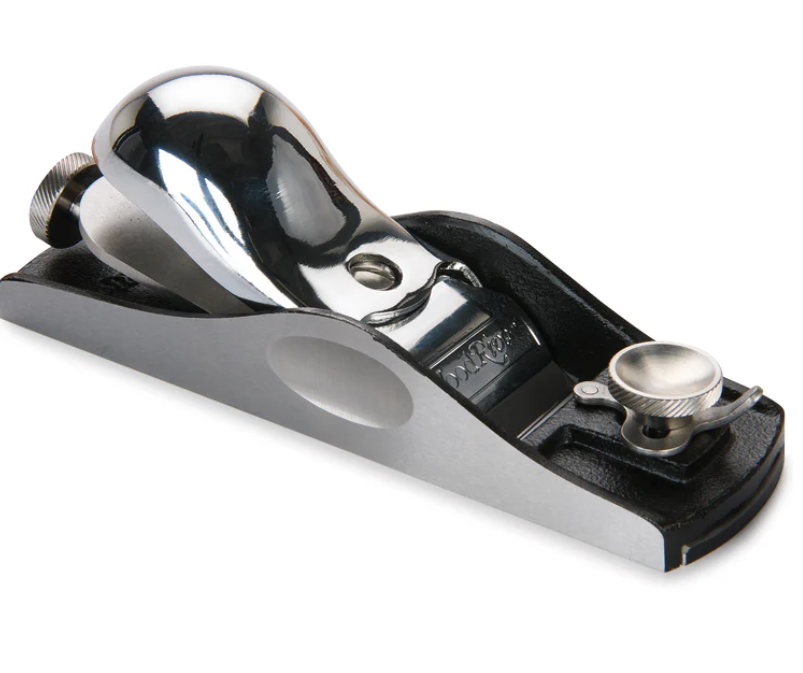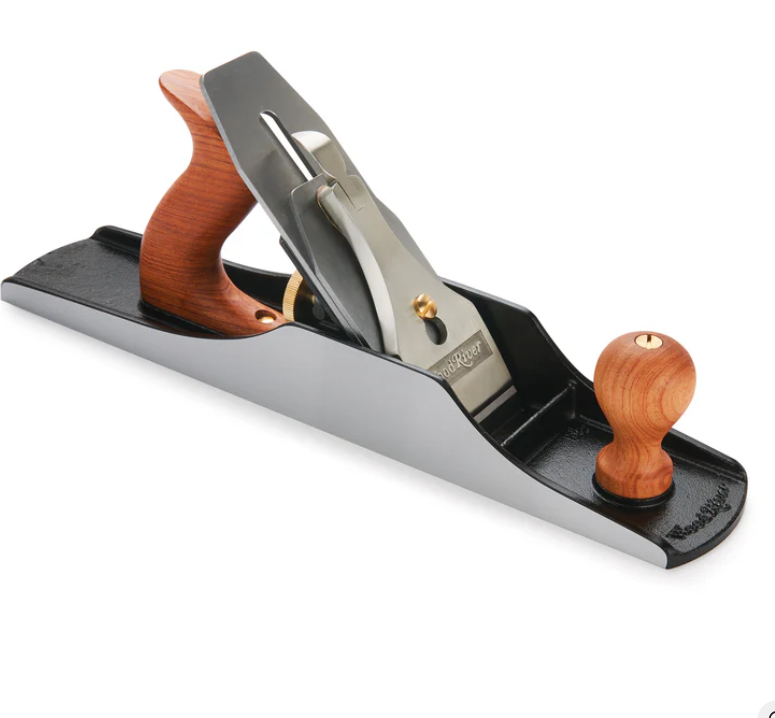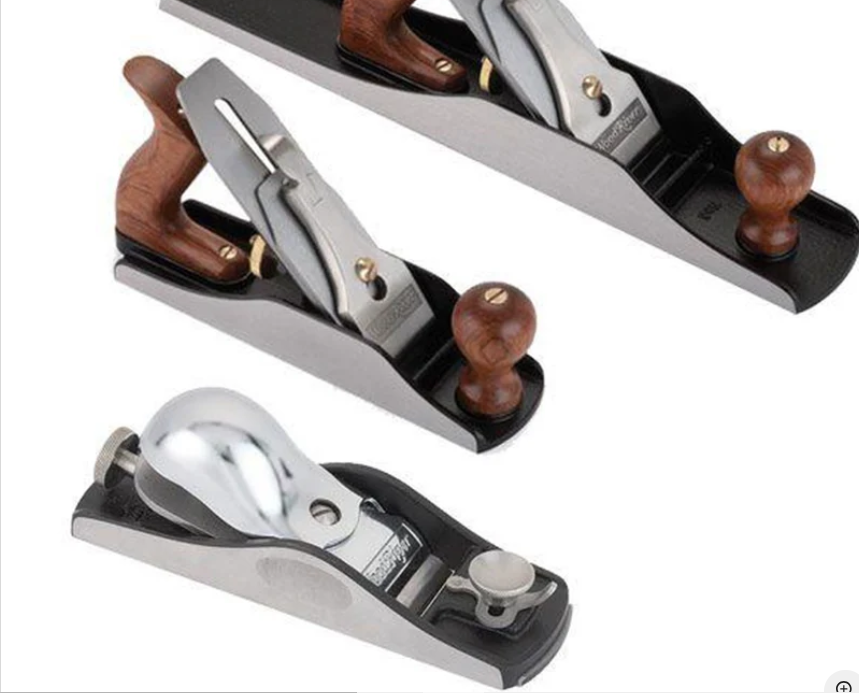
Low Angle Block Hand Plane with Adjustable Mouth
- Based on a classic design
- Knuckle style lever cap
- Crisp & easy blade adjustments
- Adjustable mouth
- Made from stress-relieved ductile iron castings

5-1/2 Bench Hand Plane – Jack Plane – V3
- Ideal for flattening, squaring and initial smoothing
- Modeled after the Bedrocks, Stanley Tool’s very best line
- Features fine-grained ductile iron castings and fully machined frogs
- Soles and sides machined flat and square
- Tools require minimal tune-up prior to use

Ultimate Cabinet Maker’s Kit
- Inspired by classic designs
- Affordable performance, heirloom quality
- Soles and sides machined flat and square
- Lightly finished hardwood handles provide comfort and control
- Tools require minimal tune-up prior to use
Unleashing Craftsmanship: Why Every Workshop Needs a Woodriver in Its Arsenal
In the world of woodworking, few tools evoke as much passion and precision as a well-crafted hand plane. Among the myriad options available to today’s craftsmen, Woodriver planes have carved out a reputation for excellence that’s hard to ignore. Whether you’re a seasoned pro or a budding enthusiast, understanding the ins and outs of these remarkable tools can elevate your woodworking game to new heights. So, let’s dive into the world of Woodriver planes and discover why they might just be the perfect addition to your workshop.
What Are Woodriver Planes, Anyway?
At their core, Woodriver planes are high-quality hand tools designed for shaping, smoothing, and finishing wood surfaces. But they’re more than just hunks of metal with sharp blades. Woodriver planes are the result of a perfect marriage between traditional craftsmanship and modern manufacturing techniques. Produced by Woodcraft, a well-known name in the woodworking community, these planes combine the best of both worlds: the timeless design of classic planes with the precision and consistency of contemporary production methods.
Stacking Up: Woodriver vs. The Competition
Now, I know what you’re thinking. “There are plenty of plane brands out there. What makes Woodriver so special?” Fair question, my friend. When we pit Woodriver against other brands, a few things stand out:
- Quality-to-Price Ratio: Woodriver planes offer a level of quality that rivals much more expensive brands, making them an excellent value proposition for both hobbyists and professionals.
- Consistency: Unlike some budget brands, Woodriver maintains a high level of consistency across their product line. You’re not playing the lottery every time you buy one.
- User-Friendly Design: Many woodworkers find Woodriver planes more approachable and easier to set up than some of their high-end counterparts.
- Material Choice: The use of ductile iron in their construction provides durability without excessive weight.
While they may not have the centuries-old pedigree of some European brands or the cult following of certain boutique makers, Woodriver planes hold their own in terms of performance and value.
Where to Snag Your Own Woodriver Plane
If you’re itching to get your hands on a Woodriver plane, you’re in luck. These tools are widely available through Woodcraft’s own stores and website. You can also find them at select woodworking specialty shops and online retailers. Just be wary of secondhand markets – while you might score a deal, you’ll miss out on the warranty and the assurance of a factory-fresh tool.
A Plane for Every Purpose
One of the beauties of the Woodriver line is its variety. Whether you’re looking to smooth a tabletop or put a crisp edge on a board, there’s a Woodriver plane for the job. Here’s a quick rundown of some popular types:
- Bench Planes: From the compact No. 4 smoother to the workhorse No. 6 fore plane, these are the bread and butter of the Woodriver line.
- Block Planes: Perfect for end grain and quick touch-ups, these little guys pack a punch.
- Specialty Planes: Shoulder planes, rabbet planes, and even router planes round out the collection for more specialized tasks.
Getting Hands-On: Using Your Woodriver Plane
Now, let’s talk technique. Using a Woodriver plane isn’t rocket science, but it does require a bit of finesse. Here are some tips to get you started:
- Set the blade: Adjust the blade depth for the type of cut you want – finer for finishing, deeper for rough work.
- Mind your grip: Hold the plane firmly but not with a death grip. Let the tool do the work.
- Go with the grain: Whenever possible, plane with the wood grain to avoid tear-out.
- Practice makes perfect: Start on some scrap wood to get a feel for the tool before tackling your project.
Remember, the key to great results with any hand plane is patience and practice. Don’t get discouraged if your first attempts aren’t perfect – even master craftsmen were beginners once.
The Perks of Planing: Why Woodriver Planes Shine
So, why bother with hand planes in the age of power tools? Well, Woodriver planes offer several benefits that machines just can’t match:
- Precision: Nothing beats a well-tuned hand plane for achieving a glass-smooth surface.
- Control: You have complete control over the cut, allowing for fine adjustments impossible with power tools.
- Quiet Operation: Say goodbye to earplugs – hand planing is blissfully quiet.
- Connection to the Craft: There’s something deeply satisfying about shaping wood with your own hands.
- Versatility: From rough stock removal to delicate finishing, a good set of planes can handle it all.
Keeping Your Edge: Sharpening Woodriver Plane Blades
A dull plane is about as useful as a chocolate teapot, so let’s talk sharpening. Woodriver plane blades are made of high-carbon steel, which holds an edge well but does require regular maintenance. Here’s a basic sharpening process:
- Flatten the back of the blade on a coarse stone, working up to a fine grit.
- Set your desired bevel angle (usually around 25 degrees for bench planes).
- Work through progressively finer grits, maintaining the bevel angle.
- Finish with a strop to remove any burr and achieve a razor-sharp edge.
Invest in good sharpening tools and make honing a regular part of your woodworking routine. Your planes (and your projects) will thank you.
Newbie-Friendly: Are Woodriver Planes Good for Beginners?
Absolutely! In fact, Woodriver planes are often recommended for those just starting their hand tool journey. They’re well-made enough to perform admirably but won’t break the bank like some premium brands. Plus, their user-friendly design makes them less intimidating for newcomers to set up and use.
Counting the Cost: Woodriver Plane Pricing
Let’s talk turkey – how much will a Woodriver plane set you back? Prices vary depending on the model, but generally, you can expect to pay:
- $100-$200 for most bench planes
- $50-$100 for block planes
- $150-$300 for specialty planes
While not the cheapest options on the market, Woodriver planes offer excellent value for their quality. They’re an investment in your craft that won’t require a second mortgage.
The Verdict: What Do Users Say About Woodriver Planes?
The woodworking community has largely embraced Woodriver planes, with many users praising their performance and value. Common points of praise include:
- Solid construction and good fit and finish
- Smooth operation out of the box
- Excellent customer service from Woodcraft
Of course, no tool is perfect. Some users note that the planes may require a bit of tuning to reach their full potential, and others wish for more size options in certain models. Overall, however, the consensus is overwhelmingly positive.
TLC for Your Tools: Maintaining Woodriver Planes
To keep your Woodriver planes in top shape, a little regular maintenance goes a long way:
- Clean after each use to prevent rust and buildup.
- Apply a light coat of oil to metal surfaces to prevent corrosion.
- Store in a dry place, preferably with a plane sock or in a tool chest.
- Periodically check and tighten any loose screws or adjustments.
- Re-flatten the sole if necessary (though this is rarely needed with modern planes).
Versatility Incarnate: Hardwood, Softwood, and Everything in Between
One of the great things about Woodriver planes is their versatility. Whether you’re working with rock-hard maple or pillowy-soft pine, these planes can handle it all. Just remember to adjust your technique and blade depth according to the wood you’re working with.
Accessorize Your Arsenal: Woodriver Plane Add-Ons
While Woodriver planes are pretty complete right out of the box, there are a few accessories you might want to consider:
- Replacement blades for when you eventually wear one out
- Plane socks for storage and protection
- Honing guides to assist with sharpening
- Blade sharpening systems for maintaining that perfect edge
Fine-Tuning Your Tool: Adjusting Woodriver Plane Blades
Getting your Woodriver plane dialed in is crucial for optimal performance. Here’s a quick guide to blade adjustment:
- Loosen the lever cap and remove the chip breaker and blade.
- Reassemble, leaving the lever cap loose.
- Adjust the frog position for the desired mouth opening.
- Use the depth adjustment wheel to set the blade projection.
- Adjust the lateral lever to ensure the blade is parallel to the sole.
- Tighten everything down and test on a piece of scrap wood.
Remember, blade adjustment is as much art as science – trust your eyes and your hands.
Smooth Operator: The Best Woodriver Plane for Finishing
If you’re after that perfect, glass-smooth finish, look no further than the Woodriver No. 4 Smooth Plane. Its compact size and finely-tuned mouth make it ideal for those final passes that turn good work into great work.
The Million Dollar Question: Are Woodriver Planes Worth It?
In a word: yes. Woodriver planes offer a compelling combination of quality, performance, and value that’s hard to beat. While they may not have the cachet of some premium brands, they more than make up for it in sheer usability and bang for your buck.
Troubleshooting 101: Common Woodriver Plane Issues
Even the best tools can sometimes give us grief. Here are some common issues with Woodriver planes and how to address them:
- Chatter: Usually caused by a dull blade or improper adjustment. Sharpen and re-adjust.
- Tear-out: Try closing the mouth, sharpening the blade, or adjusting your technique.
- Difficulty adjusting: Clean and lightly oil the adjustment mechanisms.
- Rust: Clean thoroughly and apply a protective coating.
Bench vs. Block: Understanding Woodriver Plane Types
While both are essential in a well-rounded tool kit, bench planes and block planes serve different purposes:
- Bench planes are larger, used for flattening and smoothing large surfaces.
- Block planes are smaller, often used one-handed for end grain and quick touch-ups.
Both types are well-represented in the Woodriver line, so you can build a complete set as your skills and needs grow.
Built to Last: The Lifespan of Woodriver Planes
With proper care and maintenance, a Woodriver plane can easily last a lifetime. Many woodworkers pass down their well-loved planes to the next generation. The key is regular maintenance and respecting the tool’s limits.
Fan Favorites: Popular Woodriver Plane Models
While personal preference plays a big role, some Woodriver planes have emerged as clear favorites among woodworkers:
- No. 4 Smooth Plane: The go-to for final smoothing and finishing.
- Low Angle Block Plane: Versatile and perfect for end grain work.
- No. 6 Fore Plane: A workhorse for flattening and dimensioning stock.
These models offer a great starting point for building your Woodriver collection.
In conclusion, Woodriver planes offer an excellent entry point into the world of quality hand tools. They combine traditional design with modern manufacturing to create planes that perform well above their price point. Whether you’re just starting out or looking to expand your toolkit, Woodriver planes deserve a serious look. So why not give one a try? Your next project (and your hands) will thank you.



